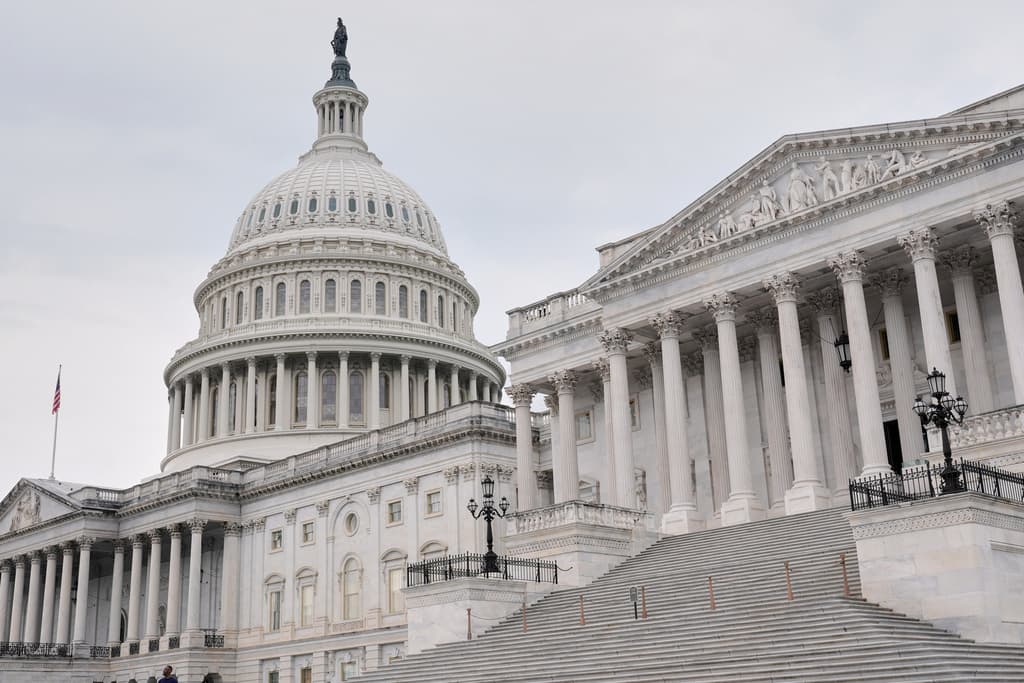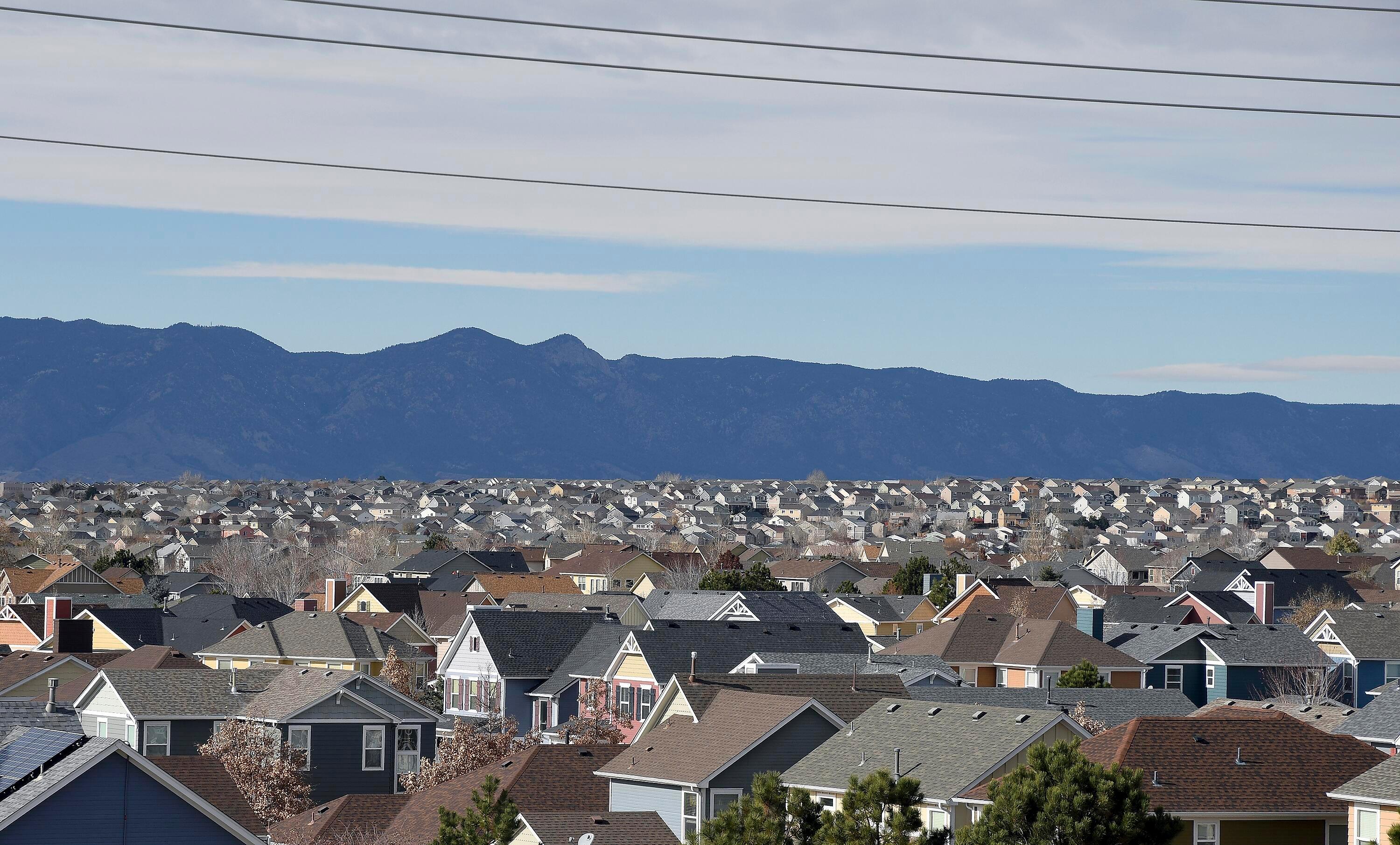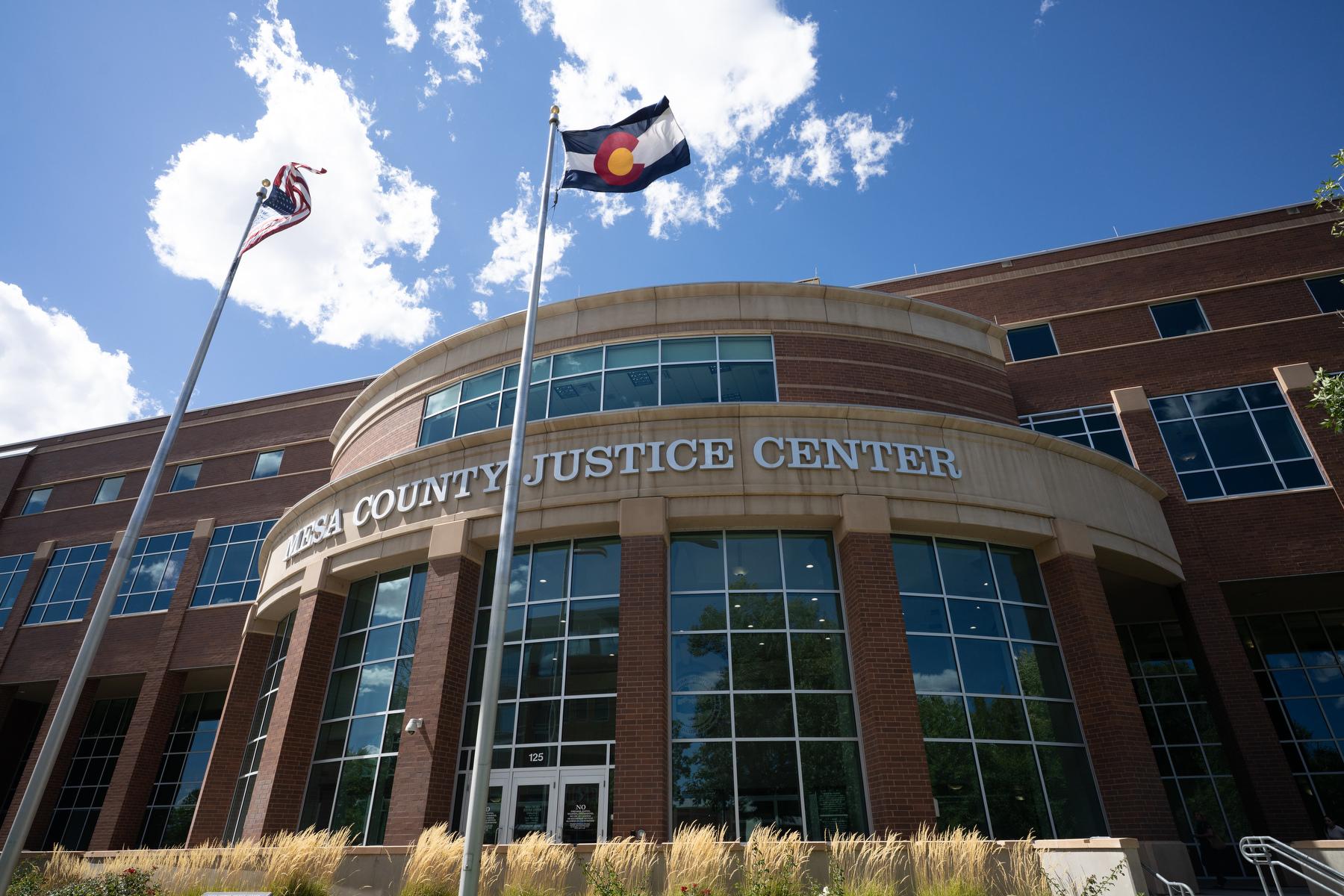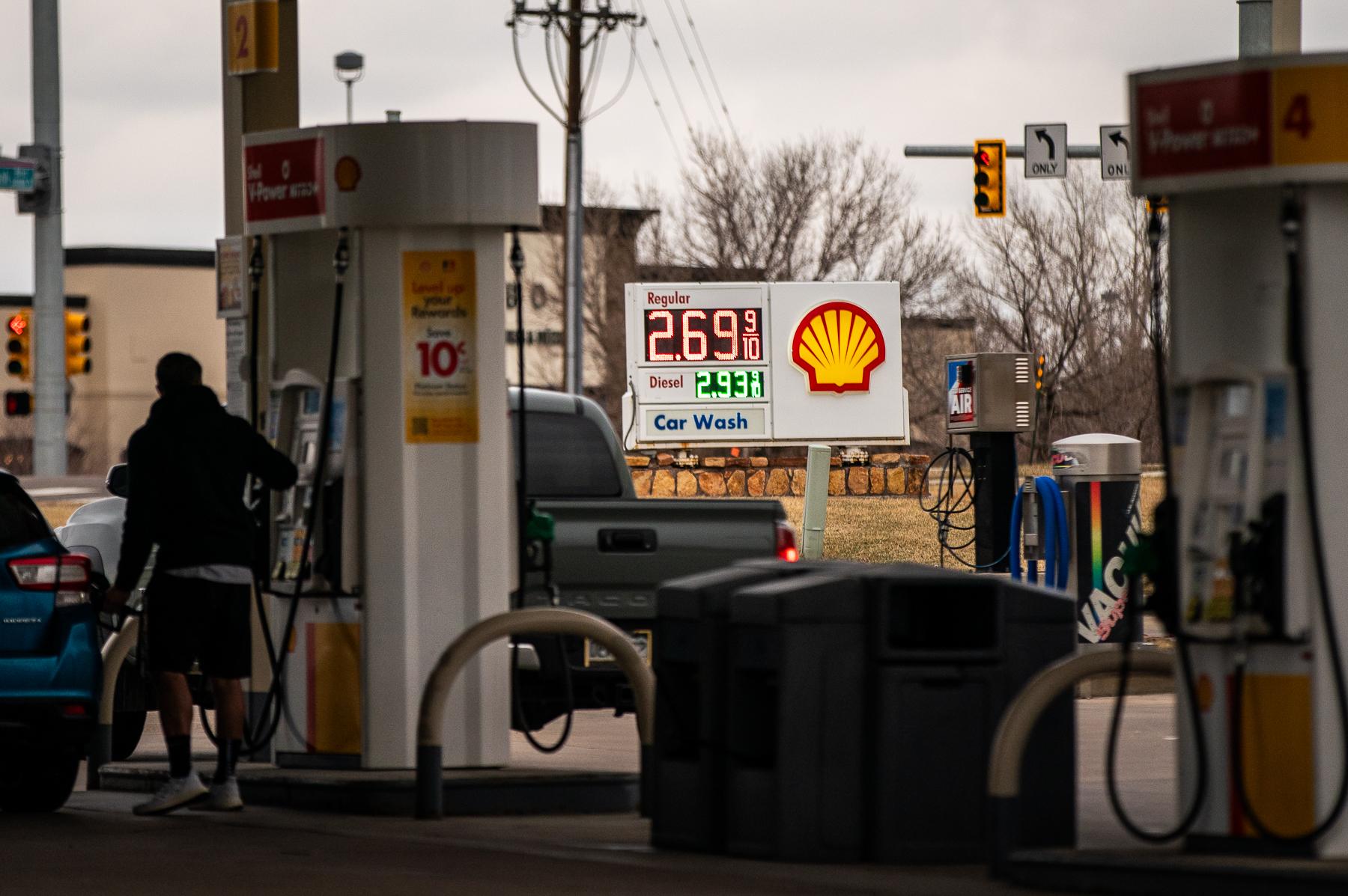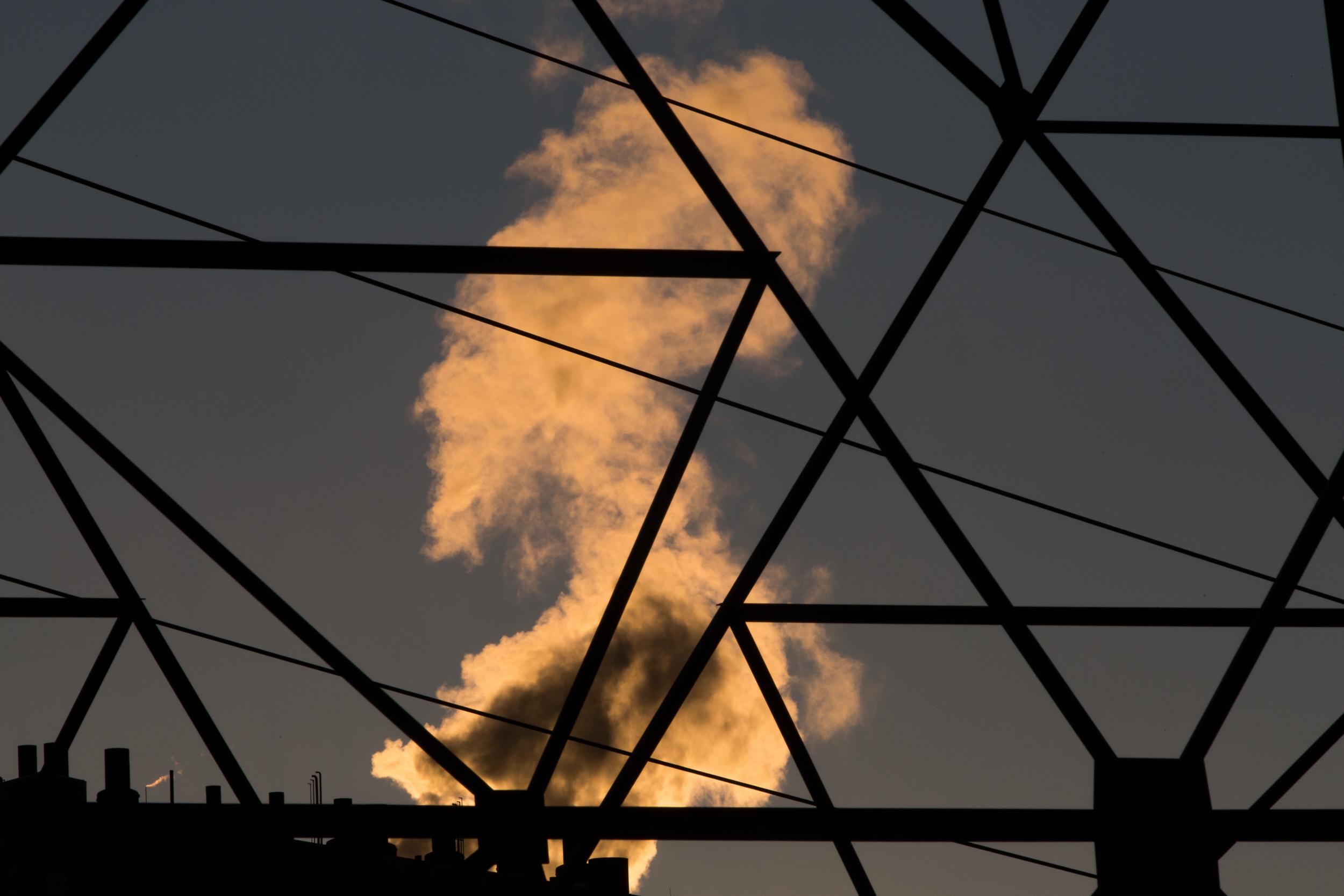
After decades of increasingly dire warnings from scientists, climate change is on the minds of Colorado voters as a top issue in a U.S. presidential election.
Seventy-seven percent of people in the state call climate change a problem according to a 2019 survey commissioned by Colorado College. 62 percent rank it as a very or extremely serious problem — a 33 percent increase over the last survey in 2016.
CPR News found similar results during its Voter Voices project. More than 700 people across the state filled out a survey to guide our coverage of the presidential election. Many respondents identified climate change as the one issue where they’d be least likely to vote for a candidate who doesn’t align with their views.
In the last few years, the scientific prognosis for the planet has gone from bad to calamitous. To limit the risk of famines, floods and forced migration, the UN’s Intergovernmental Panel On Climate Change warns the world needs to cap warming at 1.5 degrees Centigrade. To meet that goal, human society would need to stop adding greenhouse gas emissions to the atmosphere by 2050, all while managing the consequences of an already warmer world.
So do Colorado voters know how presidential candidates plan to tackle the issue? Not exactly.
The “climate voters” CPR spoke to agree on at least one thing: They’re not fans of President Trump.
Judith Hubert, a retiree living in Denver, said her concern about climate change stems from her Catholic faith. She believes the Bible has called all people to care for creation. Since he has taken office, Hubert said Trump has run in the opposite direction, especially when it comes to climate change.
“He doesn’t even seem to acknowledge that it even exists, that it’s even an issue,” Hubert said.
So far, she doesn’t have a top candidate for the Democratic presidential nomination. She wishes she knew more about how they’d approach the crisis.
This was another common theme.
David Zillis, a 29-year-old mechanical engineer in Denver, said it’s unclear to him how the Democratic candidates would meet the goals laid out in the latest Intergovernmental Panel on Climate Change (IPCC) report.
“It’s been sort of vague from a lot of the politicians,” he said. “What are the actual concrete steps they’re going to take — as opposed to just throwing out some funny numbers and saying it's a big issue?”
Zillis said he’s found climate change is one issue pushing him further to the left. He’s trying to decide between voting for Sen. Bernie Sanders and Sen. Elizabeth Warren. He likes how Warren has built climate change into her plans for everything from infrastructure to tax policy. Still, he wants more details about how candidates would go about enacting their plans.
Jeff Baltrush, a satellite engineer in Boulder, said he’s an unaffiliated voter who tends to favor more moderate candidates. He’s looking for someone with a realistic approach — one that could survive the U.S. political system while ensuring the climate remains safe for his young daughter.
“I would want to see something achievable that’d also be impactful,” he said.
Here’s what those candidates are saying.
President Donald Trump infamously called climate change a Chinese hoax on Twitter in 2012, but has slightly moderated his rhetoric on the topic as president. Now, when asked about human-caused global warming, he tends to pivot to more local environmental issues like clean air and water.
As for his policy decisions, Trump has withdrawn from the Paris climate agreement, replaced the Obama-era Clean Power Plan with weaker regulations for the electricity sector and tried to block higher fuel efficiency standards in new vehicles. At the same time, his administration has sought to relax environmental evaluations for major infrastructure projects, like dams and oil pipelines. It’s also opened up vast tracts of public land to oil and gas companies. That last effort alone marks a radical contrast with his Democratic opponents, almost all of whom have promised to ban or pause oil and gas development on federal land.
Bernie Sanders has a plan for climate change with an eye-popping price tag: $16.3 trillion over 15 years. For some perspective, that’s by far the most expensive of any Democratic presidential candidate. It’s also about four times more than the U.S. spent fighting World War II when adjusted to 2019 dollars.
Sanders has said his 14,000-word plan is a more detailed version of the Green New Deal first proposed by Rep. Alexandria Ocasio-Cortez and Sen. Ed Markey. He promises to create 20 million new jobs through programs, including the return of the Roosevelt-era Civilian Conservation Corp. It would also declare climate change a national emergency, recommit the U.S. to the Paris climate agreement and push Congress to ban fracking nationwide.
So how would he pay for it? The campaign claims the money could come from cuts to military spending, increased income tax revenue and the fossil fuel industry through fees, taxes and legal penalties. Sanders also wants the federal government to make big investments in solar, wind and energy storage and sell that energy to the public.
Critics have knocked Sanders’s plans for its size and insistence on renewable power. The outline imagines meeting his ambitious climate goals without the help of nuclear power, geoengineering or carbon capture and sequestration. The manifesto refers to each as “false solutions.”
Michael Bloomberg, in his late-start run for president, has laid out his own plans to combat climate change through tougher standards for new gas-fired power plants and additional renewable energy to replace coal. Like plans from the other Democratic candidates, it would recommit the U.S. to the Paris climate accord and zero-out emissions by 2050.
Bloomberg has a record of taking on climate change as mayor and philanthropist. After Trump pulled the U.S. out of the Paris climate accord, Bloomberg launched America’s Pledge, which works with cities, states and businesses to help the U.S. stay on track to meet the goals laid out in the agreement. He bankrolled the Sierra Club’s Beyond Coal campaign, which has helped prevent new coal power plants and close existing facilities. This year, he committed another $500 million to the Sierra Club’s Beyond Carbon campaign, which will combat natural gas power plants as well.
“We’re in a race against time with climate change, and yet there is virtually no hope of bold federal action on this issue for at least another two years. Mother Nature is not waiting on our political calendar, and neither can we,” said Michael Bloomberg launching the new campaign. “Beyond Carbon will respond to this crisis with the urgency and ambition that it requires, by taking the fight to the states and turbo-charging current on-the-ground efforts.
Elizabeth Warren has built a brand around having a plan for everything, but rather than developing a single plan to combat the climate crisis, the Massachusetts senator has integrated the problem into her many of her detailed proposals.
Her plans for trade, U.S. manufacturing, public lands, tribal nations, agriculture and jobs all make direct links to climate change. All told, the campaign says Warren’s plans to fight climate change will inject about $10 trillion into the U.S. economy and create more than 10 million jobs.
Warren proposes a national ban on fracking and will declare a moratorium on all new fossil-leases on public lands. During a CNN Climate Town Hall, she declared her opposition to new nuclear power plants, saying the U.S. should instead focus on expanding renewables.
“About nuclear energy: It's not carbon-based, but the problem is it's got a lot of risks associated with it, particularly the risks associated with the spent fuel rods that nobody can figure out how we're going to store … for the next bazillion years,” she said at the CNN Climate Forum.
Warren has been especially focused making sure efforts to combat climate change benefit American workers. Her plan for so-called “economic patriotism” would dedicate $400 billion over ten years for clean energy research. The federal government would then commit to buying U.S.-manufactured green products and marketing those products abroad.
Joe Biden pleased many climate activists last June when he declared his support for a Green New Deal. His version would commit $1.7 trillion over 10 years with hopes of trillions more in investment from the private sector and state and local governments. Biden’s plan aims to achieve net-zero emissions by 2050, in keeping with the IPCC goals.
To get there, Biden thinks Congress should pass legislation to force polluters to pay for carbon emissions. While he hasn’t given further details, the former Vice President did say he supported a carbon tax during the CNN Climate Crisis Town Hall.
Biden has a unique experience on the issue. As a U.S. Senator from Delaware, he introduced one of the first climate change bills in Congress. As Vice President, he helped push regulations on automobile tailpipe emission and coal plants. He also oversaw the Obama-era stimulus package following the financial meltdown, which included substantial support for green jobs.
The experience also ties Biden to Obama’s all-of-the-above energy policies, which helped encourage the U.S. fracking boom and make the country the world’s largest oil producer.
Pete Buttigieg has been a vocal advocate of a carbon tax during the Democratic presidential race. Economists love the idea because it lets markets, rather than regulators, sort out the transition away from fossil fuels. Buttigieg takes the idea one step further. Under his climate plan, he would ask Congress to put an economy-wide price on carbon. The revenue would then be directly redistributed back to the American people.
“The beauty of things like a carbon tax is it lets a lot of these things get sorted out without anybody in Washington having to figure out all the answers,” said Buttigieg during the CNN Climate Town Hall.
Buttigieg’s climate plan would also launch a new Climate Corps program as a part of his broader goal to create a million service opportunities for high school graduates. He imagines the Climate Corps would send kids into communities to help make homes more efficient and teach students about sustainability and conservation. His plan would also set up a Clean Energy Bank to finance renewable energy projects across the country.
In total, the campaign estimates costs for the plan would come close to $2 trillion.
Amy Klobuchar’s $2- to $3-trillion plan to tackle climate change leans heavily on executive action. In the first 100 days of her administration, Klobuchar has said she’d use the powers of the White House to bring back Obama-era policies to cut greenhouse gas emissions. Those include revitalized automobile standards and power plant regulations.
“Just like Franklin Delano Roosevelt… did with his first 100 days, we have to change the tone and we have to do things that actually we can do without Congress,” she said at the CNN Climate Crisis Town Hall.
The senator from Minnesota would eventually lean on Congress for help fighting climate change. Her plan includes a $1 trillion infrastructure package to retrofit buildings, add housing and modernize the power grid. To pay for her plan, Klobuchar wants to see a price on carbon and the elimination of fossil fuel subsidies.
Unlike other candidates, she’s willing to explore nuclear energy and capturing carbon emissions from fossil fuels.

